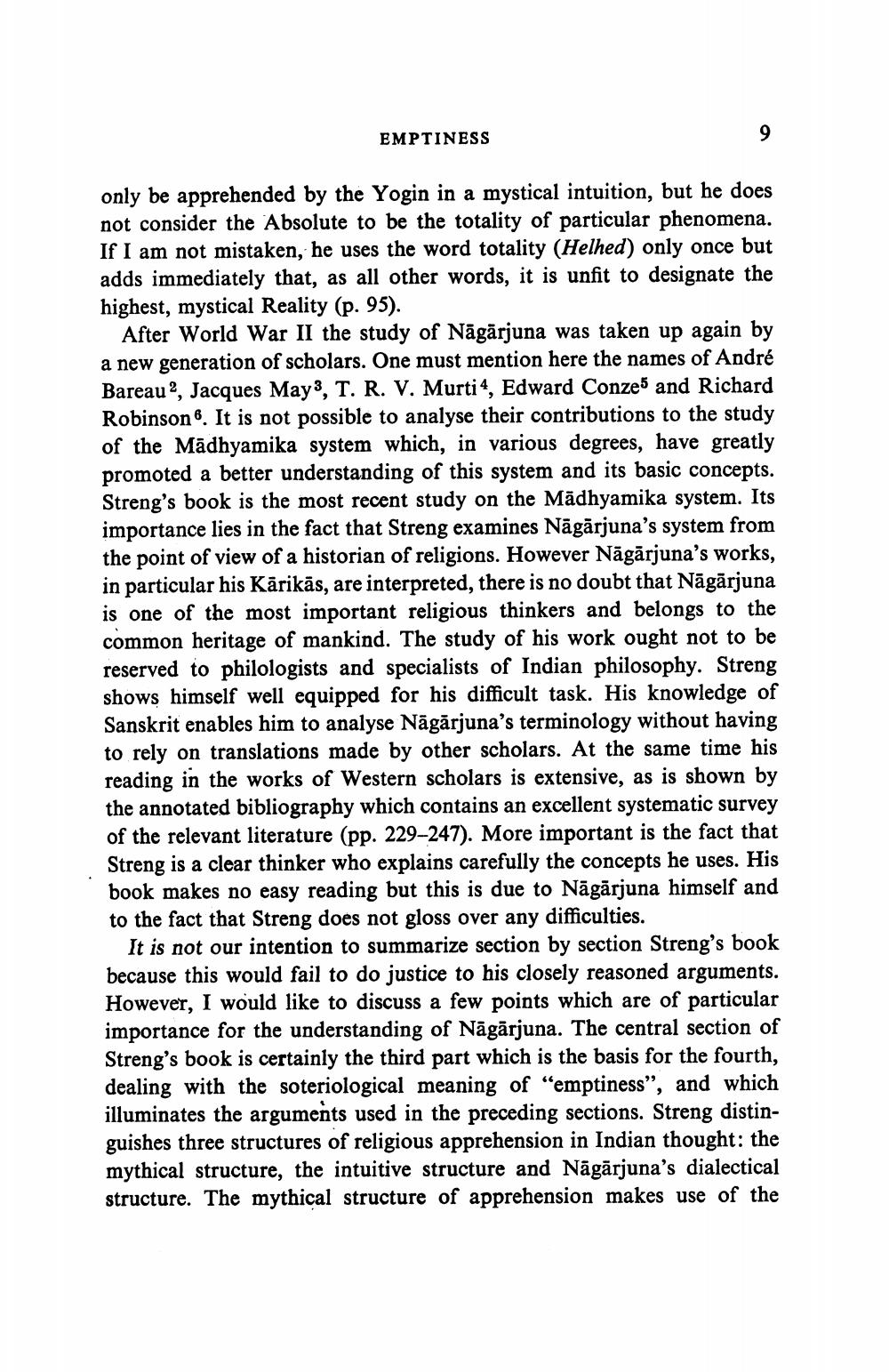Book Title: Emptiness Author(s): J W De Jong Publisher: J W De Jong View full book textPage 3
________________ EMPTINESS only be apprehended by the Yogin in a mystical intuition, but he does not consider the Absolute to be the totality of particular phenomena. If I am not mistaken, he uses the word totality (Helhed) only once but adds immediately that, as all other words, it is unfit to designate the highest, mystical Reality (p. 95). After World War II the study of Nāgārjuna was taken up again by a new generation of scholars. One must mention here the names of André Bareau, Jacques May 3, T. R. V. Murti 4, Edward Conzes and Richard Robinson. It is not possible to analyse their contributions to the study of the Madhyamika system which, in various degrees, have greatly promoted a better understanding of this system and its basic concepts. Streng's book is the most recent study on the Mādhyamika system. Its importance lies in the fact that Streng examines Nāgārjuna's system from the point of view of a historian of religions. However Nāgārjuna's works, in particular his Kārikās, are interpreted, there is no doubt that Nāgārjuna is one of the most important religious thinkers and belongs to the common heritage of mankind. The study of his work ought not to be reserved to philologists and specialists of Indian philosophy. Streng shows himself well equipped for his difficult task. His knowledge of Sanskrit enables him to analyse Nāgārjuna's terminology without having to rely on translations made by other scholars. At the same time his reading in the works of Western scholars is extensive, as is shown by the annotated bibliography which contains an excellent systematic survey of the relevant literature (pp. 229–247). More important is the fact that Streng is a clear thinker who explains carefully the concepts he uses. His book makes no easy reading but this is due to Nāgārjuna himself and to the fact that Streng does not gloss over any difficulties. It is not our intention to summarize section by section Streng's book because this would fail to do justice to his closely reasoned arguments. However, I would like to discuss a few points which are of particular importance for the understanding of Nāgārjuna. The central section of Streng's book is certainly the third part which is the basis for the fourth, dealing with the soteriological meaning of “emptiness”, and which illuminates the arguments used in the preceding sections. Streng distinguishes three structures of religious apprehension in Indian thought: the mythical structure, the intuitive structure and Nāgārjuna's dialectical structure. The mythical structure of apprehension makes use of thePage Navigation
1 2 3 4 5 6 7 8 9
